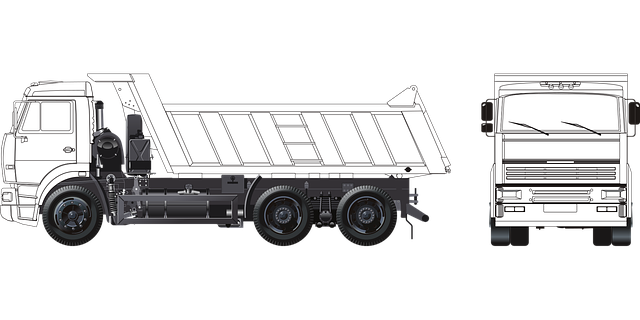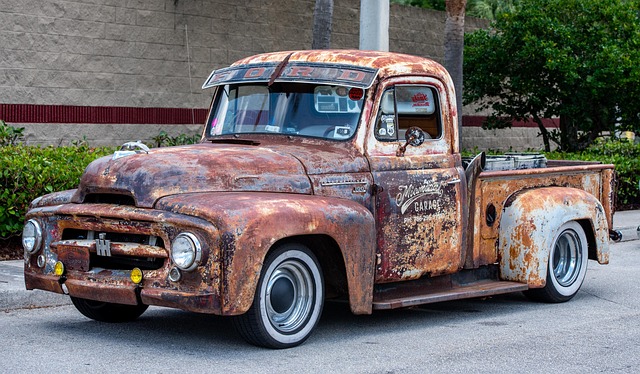Looking to register your car in California? This comprehensive guide walks you through the entire process, ensuring a smooth experience. From understanding crucial registration requirements and gathering essential documents to completing the DMV VIN verification and submitting applications with fees, we cover it all. Learn how to receive your registration and license plate efficiently, adhering to California’s strict regulations. Don’t forget to utilize our tips for a swift and accurate dmv vin verifier process.
- Understand California Car Registration Requirements
- Gather Necessary Documents for DMV Visit
- Perform Vehicle Identification Number (VIN) Verification
- Complete Application and Submit Fees at DMV
- Receive Your Registrations and License Plate
Understand California Car Registration Requirements

Before registering your car in California, it’s essential to understand the state’s specific requirements. The California Department of Motor Vehicles (DMV) mandates that all vehicles operable on public roads be properly registered and have an up-to-date inspection. One crucial step in this process involves verifying the Vehicle Identification Number (VIN). The DMV uses a VIN verifier to ensure the vehicle’s history is clear, checking for any outstanding recalls or previous damage.
Additionally, when registering your car, you may opt for a mobile vin inspection or mobile vin verification service. These services offer convenience by allowing you to complete the VIN verification process from the comfort of your home or workplace. This alternative approach can save time and effort, ensuring a smoother registration experience while adhering to California’s strict standards.
Gather Necessary Documents for DMV Visit

Before visiting your local California Department of Motor Vehicles (DMV) office, it’s crucial to gather all necessary documents. This includes your vehicle’s registration from the previous state, a valid driver’s license, proof of insurance, and identification with your current address. Additionally, you’ll need the Vehicle Identification Number (VIN) for your car, which can be found on the vehicle’s title or on the label located on the driver’s side door jamb. Using a DMV VIN verifier or even a mobile vin verifier app can help ensure this number is accurate and accessible.
For added convenience, consider utilizing a mobile vin verification service for a smooth registration process. This not only streamlines the preparation but also facilitates an efficient trip to the DMV. Remember to bring along any other documents requested by your specific local DMV office, as requirements may vary.
Perform Vehicle Identification Number (VIN) Verification

Before you begin the registration process, it’s crucial to perform a Vehicle Identification Number (VIN) verification. This step is essential as it ensures that your car’s details match the information on record with the Department of Motor Vehicles (DMV). Many individuals opt for mobile VIN verification services, where a professional will inspect and validate your vehicle’s VIN in real time using specialized tools. Alternatively, you can conduct a basic VIN inspection yourself by checking the accuracy of the number on key documents like the title and registration papers.
The DMV vin verifier plays a vital role in maintaining the integrity of California’s vehicle records. By verifying the VIN, you can protect against fraud and ensure that your car is road-worthy. This process aligns with state regulations and helps facilitate a smooth registration experience for all drivers.
Complete Application and Submit Fees at DMV

After gathering all the necessary documents and ensuring your car meets California’s requirements, it’s time to complete the registration process at the Department of Motor Vehicles (DMV). Start by filling out Form DV-140, which is the Application for Title and Registration. This form requires detailed information about your vehicle, including its make, model, year, and VIN (Vehicle Identification Number), which can be easily verified using a DMV VIN verifier or even a mobile VIN inspection app for added convenience.
When submitting your application, you’ll also need to pay the required fees. These include the registration fee plus any additional charges based on your vehicle type and emissions status. Don’t forget that you can often avoid waiting in long lines at the DMV by scheduling an appointment online or utilizing their mobile services for a more efficient experience, including even mobile VIN verification.
Receive Your Registrations and License Plate

After completing your car’s purchase, it’s time to receive your registration and license plate. This involves a crucial step of verifying the vehicle’s identification number (VIN) through a process known as VIN inspection or VIN verification. In California, this is typically done by visiting a Department of Motor Vehicles (DMV) office or utilizing a reliable mobile VIN verifier.
A mobile VIN verifier can be a convenient alternative for those who prefer not to visit a DMV. This service allows you to check your car’s history and ensure its authenticity remotely. By inputting the VIN, which is usually located on the vehicle’s registration document or near the windshield, you gain access to detailed information that confirms the car’s make, model, year, and any previous ownership records. Ensuring accuracy during this step is essential, as it contributes to maintaining a secure and accurate vehicle registration process in California.
Registering a car in California involves understanding state requirements, gathering essential documents, and completing a straightforward process at the Department of Motor Vehicles (DMV). By performing a Vehicle Identification Number (VIN) verification using a trusted DMV VIN verifier, ensuring all paperwork is in order, and submitting the necessary fees, you’ll be on your way to receiving your vehicle’s registration and license plate. This ensures compliance with California laws and allows you to legally hit the road.
